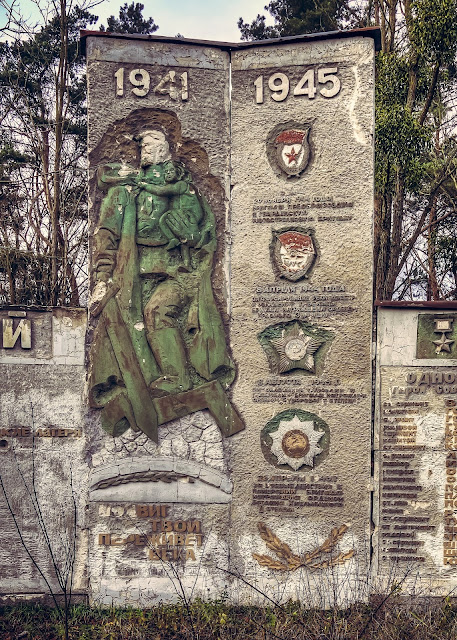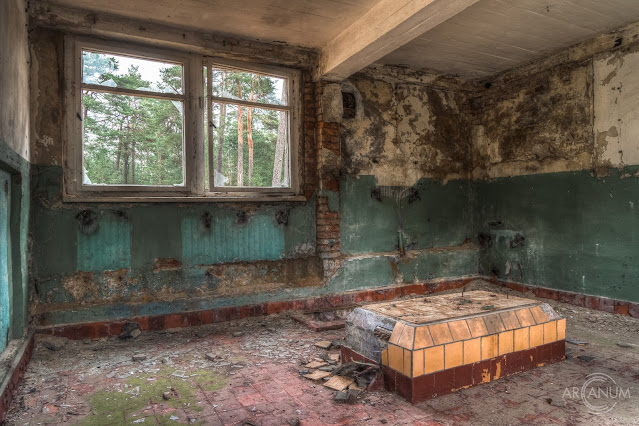During our fall vacation in November 2019, we took a short tour through the German state of Brandenburg. To start the tour, we had visited the old Soviet memorial from the Cold War on the way to the hotel, which was a good start for this tour, as the area is full of relics from this period that were either used by the Soviets or the GDR authorities.
This was also the case with the two objects we had chosen as our destinations for the following day.
As it was late fall and the days were already very short with little daylight, we skipped breakfast (we usually only have a small snack on the way) and drove to the first location. We could have walked the 3 kilometers, but as we had another stop about 50 kilometers away, we decided to take the car.
Our first destination was the ruins of a hotel that was going to be used by functionaries of the GDR State Security (Stasi) for recreation. It was under construction when the Wall fell and the building was never completed as a result.
We parked our car in the public parking lot of a nearby thermal spa. From there, we made our way to the old building. After a few hundred meters, we reached the forest path that would take us to our destination. After just a few minutes, we could see the first outbuildings through the trees, but we ignored them for the time being as the main building was our destination.
After a little more walking, we reached it and, as we had expected, there were no fences or doors to stop us on our way.
So we got into the building without any problems and took our time looking around. There was graffiti everywhere and quite a lot of garbage lying around in some areas. We had already suspected this from the pictures we had seen online beforehand.
The most interesting thing was the architecture. Although it's difficult to make out due to the many trees, the restaurant building has an unusual shape, reminiscent of an octagon, and an atrium-like staircase connects the restaurant with a roof terrace and the wellness area. There is a relatively small pool, which is now filled with rainwater and garbage.
As we looked around the hotel rooms, we were overcome by the feeling that we were no longer alone. It seemed to us that we kept hearing footsteps, but we put this down to raindrops falling from the ceiling in the corridors. We were mistaken. At some point, we ran into the arms of a gentleman. We got a bit of a fright, but this is not an unfamiliar situation for us, so the shock was limited. The gentleman was around 60 and asked what we were doing. It turned out that he was a local resident who had made a habit of chasing away teenagers who were using the building as a party location so that no fires were started on the site in the middle of the forest, which would spread to the forest, which was very dry in places.
We were friendly and explained to him what we were doing and he left us alone. What else could he have done - he doesn't have the right to enter the site, and calling the police for two people in their mid-forties taking photos would have been a bit excessive.
After the encounter, we took our time to explore the rest of the building before walking back to the car. On the way back, we took a quick look into the outbuildings, but they seemed to be the illegal dump for the neighborhood, so we didn't even bother going inside.
Upon reaching the car, we had the aforementioned snack and went back on the road to get to the next location.
To find out about the history of this place and to check out all the photos, click the button below.






































